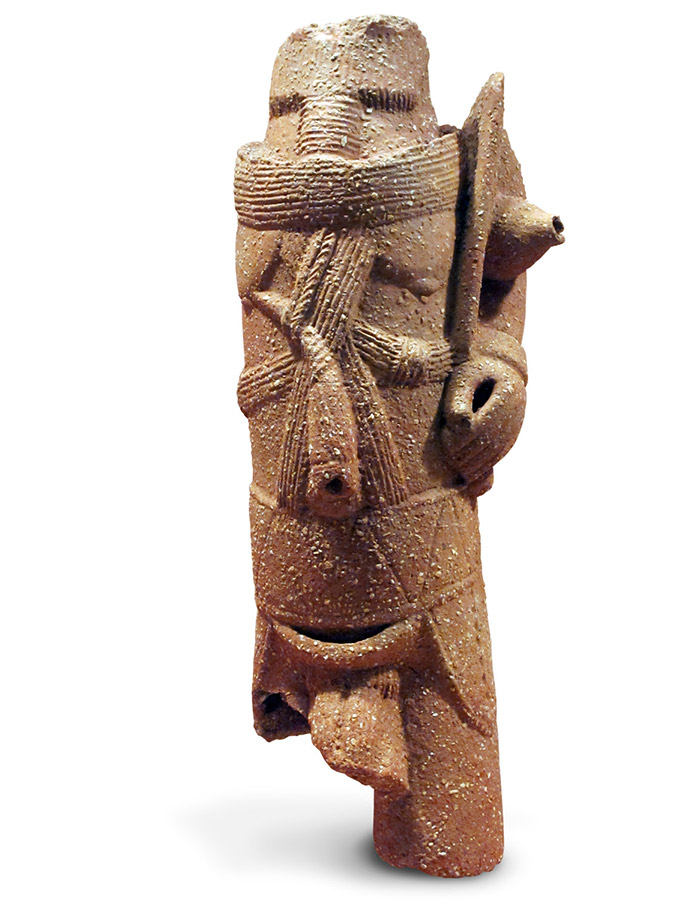
Nok
TORSO OF A CHIEF,
Terra-cotta
Height: 25 3/4 inches
Museum purchase with funds provided by the Medici Society
2003.76
Nok
Torso of a Chief
Nok sculpture derive their name from a group of sculpture inadvertently discovered in 1944 at a tin mine near the village of Nok in present-day Nigeria. Terra-cottas in Nok style have subsequently been discovered across an area of over 100 square kilometers. Carbon dating suggests that the majority of the figures were produced from around 500 BCE until about 200 CE. They not only afford a rare view of life in Nigerian prehistory but also are among the earliest known works of sub-Saharan African art.
Because few figures have survived intact, little is known about the exact purpose and uses of such figures. Archaeologists speculate that many of these were made for religious purposes – representing deities or mythical beings; while others, such as this example, seem to be portraits of important individuals, chiefs or ancestors.
